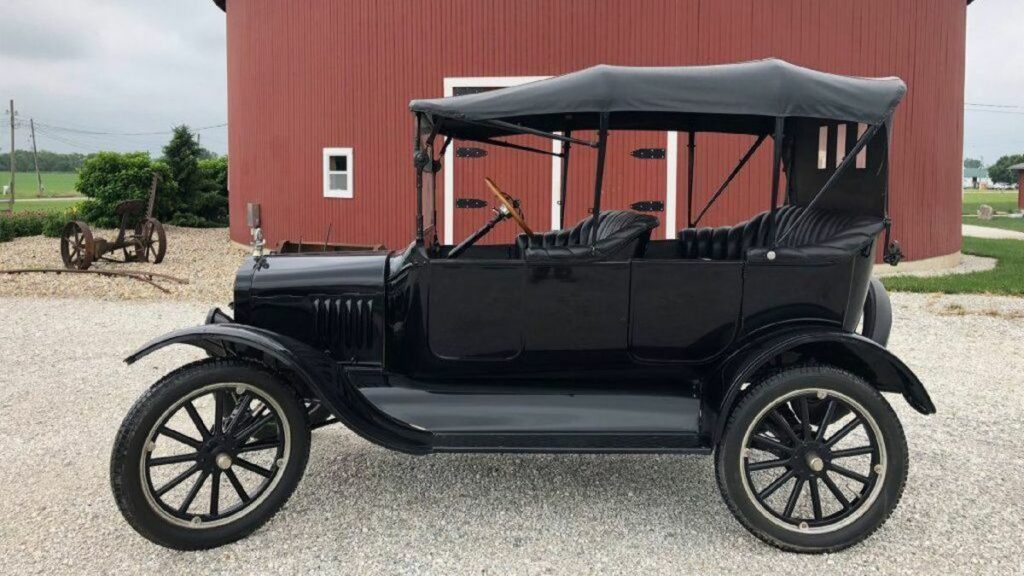Teslas may seem like space age tech, but electric cars existed at the genesis of the auto industry. Automobiles were adopted in this order: steam engine—electric cars—internal combustion engines. Whereas the gas powered engines came in the early 1900s, electric engines were around in the 1800s. They didn’t last long until the advent of rechargeable batteries in 1859.
Fresh out of Scotland
Scottish engineers were early electric car innovators. William Morrison was one such engineer who made a splash in America in 1887 with his 4WD electric carriage. With a top speed of 20 mph, this car was a sensation at the Chicago World Fair of 1893.

Electric Cars Take NYC
By the early 1900s, New York City had 600 electric cabs, and other large cities followed suit. The taxi venture eventually failed in 1907 because of business issues like investor conflicts, and an unsustainable expansion. Ransom Eli Olds, founder of Oldsmobile cars created a line of electric cars before he rolled out his gas powered line.
The Tech Race
As internal combustion engines began to win the technology race, electric cars stayed in business because they were silent and easy to use. Often, women drove them because they didn’t want to crank the newer gas powered engines to start them. City shopping districts had charging stations to attract wealthy electric car driving customers.

Price Wars
Gas car manufacturers removed the crank barrier to their adoption by using electric parts, specifically a starter. But they didn’t just win the tech battle. Ford’s Model T was much more affordable and kept getting cheaper. The first Model T was $850 in 1908, when most electric cars were at least twice that price. By 1923, Model Ts cost $300, while electric cars were 10 times that price.
Introducing Tesla
Teslas are similarly too expensive for most. Founded in 2003, Tesla wanted to prove that electric cars could be better, quicker, and more fun to drive than gas cars. Their goal is no less than eliminating fossil fuels ASAP. Their mission: “to accelerate the world’s transition to sustainable energy.” How do they plan to accomplish this? Their strategy is to start at the high end of the market, then drive down the market as fast as possible to producing more cars at lower prices with each model. That would look like this:
| Current Car | Price |
| Model 3 | $94,900 |
| Next generation | $47,450 |
| Generation after next | $23,725 |
The Tesla strategy depends on finding enough elite customers to buy the expensive cars, and that would pay for the development of the next generation cars, and so on.
How Many People Buy Teslas?
According to this source, Tesla sold 936,000 cars in the U.S. in 2021. Their market share is 2.02%. The cheapest Teslas are the Model 3 Standard Rage Plus, which have a base price of $44,990.
How Many People Buy Fords?
Ford is the automaker that defeated the early electric car, despite the fact that Henry Ford’s wife, Clara, exclusively drove electric cars from 1908-1914. So how does Ford stack up against the biggest electric carmaker today? Ford sold 1,905,955 cars in 2021. Their market share is 12.6%. Though they are falling behind Toyota and GM, they remain competitive with their F150s, and even plan to dominate with an electric version in the future.
Who Will Win the Electric Car Race?
Teslas are intriguing. They are fast and cool, and Musk is playing to win. Does this mean he will beat other automakers in their rush to produce electric cars to compete head to head? What about trucks? Trucks are the hottest gas cars. What happens if they switch to electric? Ford’s F-150 Lightning Electric truck promises to cost between $39,974 and $95,000. They plan to be just behind Tesla in electric car production by 2023. So if it’s Tesla against the world—they’d probably have to compete head to head with the whole industry. It’s unlikely they’d remain the only electric car company.

Can Tesla Eliminate Fossil Fuels?
That’s easier said than done. If it is possible to do this on swagger, sure. Tesla is leading the way. They’ve grown a lot in the past few years. Whereas Henry Ford dominated the early auto market because of manufacturing innovation and lower prices, Tesla may do it by its cool factor and influence. They will also have help this time around by the other automakers, including Ford. It remains to be seen whether the industry will stop producing gas cars.
